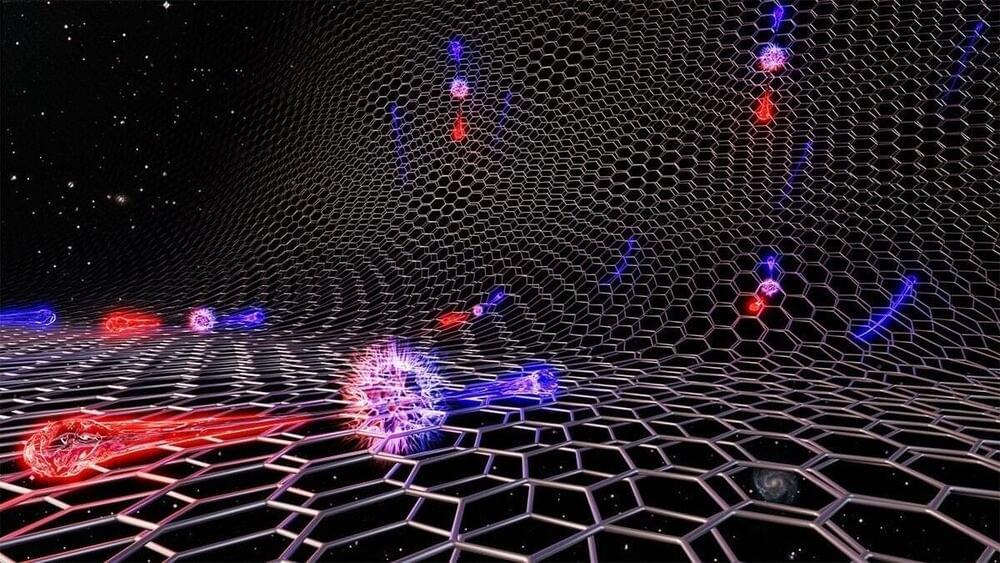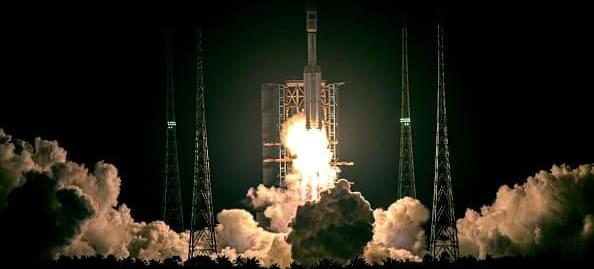The universe is expanding. But what happens when it stops? Will we have enough time to find our neighbors before it all starts over again? property= description.


Seeing stage separation in a whole new light after this flight.

Researchers have found over 20,000 instances of publicly exposed data center infrastructure management (DCIM) software that monitor devices, HVAC control systems, and power distribution units, which could be used for a range of catastrophic attacks.
Data centers house costly systems that support business storage solutions, operational systems, website hosting, data processing, and more.
The buildings that host data centers must comply with strict safety regulations concerning fire protection, airflow, electric power, and physical security.


The country is doubling down on its Bitcoin gamble in some style. But will it pay off?
For more by Tomorrow’s Build subscribe now — https://bit.ly/3vOOJ98
Narrator — Fred Mills.
Executive Producers — Fred Mills and Graham MacAree.
Producer — Adam Savage.
Video Editing — Aaron Wood.
Motion Graphics — Vince North.
Additional footage and images courtesy of Google Earth, Al Jazeera, Bloomberg, DW News, Raúl Arias/CC BY 2.0, United Nations, WSJ and Yahoo Finance.
Follow us on Twitter — https://twitter.com/TomorrowsBuild/
Like us on Facebook — https://www.facebook.com/TomorrowsBuild/
Follow us on LinkedIn — https://www.linkedin.com/company/TomorrowsBuild/
Follow us on Instagram — https://www.instagram.com/TomorrowsBuild/
#construction #architecture #bitcoin.
Tomorrow’s Build is owned and operated by The B1M Limited. We welcome you sharing our content to inspire others, but please be nice and play by our rules: http://www.theb1m.com/guidelines-for-sharing.


The AI nanny is here! In a new feat for science, robots and AI can now be paired to optimise the creation of human life. In a Matrix-esque reality, robotics and artificial intelligence can now help to develop babies with algorithms and artificial wombs.
Reported by South China Morning Post, Chinese scientists in Suzhou have developed the new technology. However, there are worries surrounding the ethics of actually artificially growing human babies.
This video covers the world in 2080 and its future technologies. Watch this next video about the world in 2070: https://bit.ly/3nYXvjf.
► BlockFi: Get Up To $250 In Bitcoin: https://bit.ly/3rPOf1V
► Jarvis AI: Write 5x Faster With Artificial Intelligence: https://bit.ly/3HbfvhO
► M1 Finance: Open A Roth IRA And Get Up To $500: https://bit.ly/3KHZvq0
► Udacity: 75% Off All Courses (Biggest Discount Ever): https://bit.ly/3j9pIRZ
► Business Ideas Academy: Start A Business You Love: https://bit.ly/3KI7B1S
SOURCES:
• https://www.futuretimeline.net.
• The Future of Humanity (Michio Kaku): https://amzn.to/3Gz8ffA
• The Singularity Is Near: When Humans Transcend Biology (Ray Kurzweil): https://amzn.to/3ftOhXI
• Physics of the Future (Michio Kaku): https://amzn.to/33NP7f7
▶️ RECOMMENDED PLAYLISTS:
Future Technologies: https://youtube.com/playlist?list=PLiUrMrgIdon8afD1EtG3_mabSHLrfdKZJ
Technology Trends: https://youtube.com/playlist?list=PLiUrMrgIdon_H3FbJQFXqnjlyOYdHpY9q.
Business Tech: https://youtube.com/playlist?list=PLiUrMrgIdon-SUSL_8YQpO1Kqgsf5ZzyM
Business Innovation Tutorials: https://youtube.com/playlist?list=PLiUrMrgIdon97qKW3TaPO9TqC6U3zVC3W
Business Strategy Tutorials: https://youtube.com/playlist?list=PLiUrMrgIdon87F3Ads27NkSy47apAcOIH
💡 On this channel, I explain the following concepts:
• Future and emerging technologies.
• Future and emerging trends related to technology.
• The connection between Science Fiction concepts and reality.
SUBSCRIBE: https://bit.ly/3geLDGO
Disclaimer:

Just reminder, Google isn’t everything.
www.refseek.com — Academic Resource Search. More than a billion sources: encyclopedia, monographies, magazines.
www.wo… See more.
Sorry! The file you requested could not be found. Return to RefSeek
An error report has been generated and sent to the system administrator.